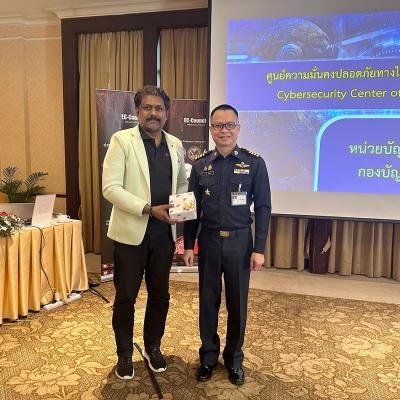In today's digital landscape, ransomware attacks have emerged as a pervasive and highly damaging cybersecurity threat, posing significant risks to individuals, businesses, and organizations worldwide. Ransomware refers to a specific type of malicious software designed to encrypt critical data and hold it hostage until a ransom is paid. These attacks can have severe consequences, including system disruptions, financial losses, and compromised sensitive information. To effectively safeguard our digital assets and protect against ransomware attacks, it is crucial to understand the nature of ransomware, explore different types of ransomware, examine their infection techniques, and implement comprehensive measures to prevent and mitigate these detrimental attacks. This blog post aims to provide an in-depth analysis of these topics, along with examples and evidence, empowering readers with the knowledge and strategies necessary to combat ransomware effectively.
What is Ransomware?
Ransomware represents a malicious class of software that encrypts files and restricts access to them until a ransom is paid. It is typically delivered through various attack vectors, such as phishing emails, compromised websites, or exploiting vulnerabilities in software or operating systems. Once the ransomware infects a system, it encrypts the victim's files using strong encryption algorithms, rendering them inaccessible. The attackers then demand a ransom, often in the form of cryptocurrency, in exchange for providing the decryption key or tool necessary to unlock the encrypted files. The ransomware landscape has evolved over time, with attackers employing increasingly sophisticated techniques to maximize their financial gains and cause significant disruptions.
Exploring Different Types of Ransomware
- Encrypting Ransomware: This type of ransomware is the most prevalent and encrypts the victim's files, making them inaccessible without the decryption key. Examples include CryptoLocker, Locky, and Ryuk. CryptoLocker, which emerged in 2013, was one of the first widely spread ransomware variants. It used strong encryption algorithms, making file decryption nearly impossible without paying the ransom.
- Locker Ransomware: Unlike encrypting ransomware, locker ransomware doesn't encrypt files but rather locks users out of their devices or systems. It prevents access to the operating system or specific functionalities, such as the desktop or Task Manager. Examples of locker ransomware include Winlocker and Police-themed ransomware. These attacks often display intimidating messages or impersonate law enforcement agencies, coercing victims into paying the ransom to regain control of their devices.
- Master Boot Record (MBR) Ransomware: MBR ransomware targets the Master Boot Record, a crucial part of a computer's startup process. By infecting the MBR, the ransomware prevents the operating system from loading, effectively rendering the system inoperable. NotPetya and Petya are notable examples of MBR ransomware. These attacks caused widespread disruptions and financial losses, affecting numerous organizations worldwide.
- Mobile Ransomware: As the name suggests, mobile ransomware specifically targets mobile devices such as smartphones and tablets. It can lock the device or encrypt files stored on it, demanding a ransom for restoration. One example is the Android-based ransomware called "Fusob," which spread through malicious apps and targeted mobile users, particularly in Russia and Eastern Europe.
- Doxware/Leakware: This type of ransomware not only encrypts files but also threatens to publish sensitive or confidential data unless the ransom is paid. The attackers leverage the fear of data exposure to extort victims into paying. The "WannaCry" ransomware had a doxware component that threatened to release encrypted files if the ransom was not paid within a specific timeframe.
- Ransomware-as-a-Service (RaaS): Ransomware-as-a-Service is a business model where cybercriminals create and distribute ransomware, allowing others to use it for their own attacks. This approach lowers the barrier to entry for aspiring attackers, as they can leverage pre-built ransomware tools and infrastructure. One well-known example is the "REvil" (Sodinokibi) ransomware, which operates as a RaaS, allowing affiliates to carry out their own ransomware campaigns.
Infection Techniques Employed by Ransomware
Ransomware employs various infection techniques to infiltrate systems and propagate within networks. Understanding these techniques is crucial for implementing effective preventive measures. Let's explore some of the common infection techniques used by ransomware:
- Phishing Emails: Phishing emails are one of the primary infection vectors for ransomware. Attackers send deceptive emails that appear to be from legitimate sources, such as financial institutions, shipping companies, or trusted contacts. These emails often contain malicious attachments, such as infected documents or executable files, or include links to compromised websites. When recipients open the attachments or click on the links, the ransomware is downloaded and executed on their systems.
- Malicious Websites and Drive-by Downloads: Cybercriminals compromise legitimate websites or create malicious websites that host ransomware payloads. They exploit vulnerabilities in the website's code or employ techniques like malvertising (malicious advertisements) to redirect users to websites that automatically download and execute ransomware onto their systems. Drive-by downloads occur without any user interaction, making them particularly dangerous.
- Exploit Kits: Exploit kits are malicious toolkits that contain various exploit codes targeting vulnerabilities in software or operating systems. Cybercriminals use exploit kits to automate the process of delivering ransomware. When a user visits a compromised or malicious website, the exploit kit scans the system for vulnerabilities and delivers the ransomware payload if any vulnerabilities are found.
- Remote Desktop Protocol (RDP) Attacks: Ransomware can exploit weak or compromised Remote Desktop Protocol (RDP) connections. Attackers brute-force their way into RDP accounts or use stolen credentials to gain unauthorized access to a system. Once inside, they deploy the ransomware to encrypt files and propagate through the network, potentially affecting multiple systems within the organization.
- Software Vulnerabilities: Ransomware often takes advantage of unpatched or outdated software vulnerabilities. Attackers scan networks for systems with known vulnerabilities and exploit them to gain unauthorized access. They then deploy the ransomware payload and proceed with encrypting files and demanding a ransom.
- Malicious Advertisements (Malvertising): Cybercriminals leverage online advertising networks to distribute malicious advertisements. These advertisements may appear on legitimate websites and contain hidden scripts that redirect users to websites hosting ransomware. When users click on these ads or visit compromised websites, the ransomware is silently downloaded and executed on their systems.
Comprehensive Steps to Prevent Ransomware Attacks
To effectively prevent ransomware attacks and minimize their impact, it is crucial to implement comprehensive security measures. Here are some essential steps to consider:
- Educate and Train Users: Provide regular training and awareness programs to educate users about ransomware threats, common attack vectors, and safe computing practices. Teach them to recognize phishing emails, avoid clicking on suspicious links or opening suspicious attachments, and report any suspicious activity promptly.
- Keep Software Up to Date: Regularly update operating systems, software applications, and plugins to ensure they have the latest security patches. Enable automatic updates whenever possible, or establish a systematic process for patch management to prevent vulnerabilities that ransomware can exploit.
- Implement Strong Passwords and Multi-Factor Authentication: Enforce the use of strong, complex passwords that are difficult to guess. Encourage the use of password managers to create and store unique passwords for each account. Additionally, enable multi-factor authentication (MFA) wherever possible to add an extra layer of security and protect against unauthorized access.
- Deploy Robust Email Security Measures: Implement email filtering solutions that can detect and block phishing emails, suspicious attachments, and malicious links. These solutions can help prevent ransomware-laden emails from reaching users' inboxes, reducing the risk of accidental infections.
- Backup Data Regularly: Maintain regular backups of critical data and ensure they are securely stored offline or in a separate network location. Implement a comprehensive backup strategy that includes periodic testing of the backup restoration process to verify its effectiveness. This way, if ransomware strikes, you can restore your data without paying the ransom.
- Restrict User Privileges: Follow the principle of least privilege (PoLP) by granting users only the minimum level of access required to perform their tasks. Limiting user privileges reduces the impact of ransomware by minimizing the ability of attackers to spread laterally within the network.
- Implement Network Segmentation: Divide your network into segments and implement appropriate access controls between them. This helps contain the spread of ransomware in case of an infection, limiting its impact to a specific segment rather than affecting the entire network.
- Use Reliable Security Software: Install reputable antivirus, anti-malware, and firewall solutions on all systems and keep them updated. Regularly scan systems for malware, including ransomware, and ensure that real-time protection features are enabled.
- Practice Least-Privilege Principle for Remote Desktop Protocol (RDP): If using Remote Desktop Protocol (RDP), implement strong security measures such as using complex passwords, enabling network-level authentication, and restricting RDP access to only authorized users.
- Conduct Regular Security Audits: Perform regular security audits and vulnerability assessments to identify potential weaknesses and address them promptly. This includes reviewing security configurations, conducting penetration testing, and staying informed about the latest ransomware trends and techniques.
Implementing Effective Mitigation Strategies
In addition to preventive measures, it is crucial to have effective mitigation strategies in place to minimize the impact of a ransomware attack. Here are some essential steps to consider for effective ransomware mitigation:
- Isolate Infected Systems: Immediately isolate any compromised systems from the network to prevent the spread of ransomware to other devices and resources. Disconnect infected systems from the network, disable Wi-Fi or unplug network cables. This containment measure helps limit the damage and prevents further encryption of files or data.
- Identify the Ransomware Variant: Determine the specific ransomware variant that has infected the system. This information can be crucial in finding decryption tools or seeking assistance from cybersecurity experts or law enforcement agencies that may have insights or solutions for that particular variant.
- Report the Incident: Report the ransomware attack to the appropriate authorities, such as law enforcement agencies or cybersecurity response teams. Reporting the incident helps in tracking and investigating the attackers, as well as sharing information that can assist other potential victims.
- Do Not Pay the Ransom: It is generally advised not to pay the ransom demanded by attackers. Paying the ransom not only encourages and funds criminal activities but also provides no guarantee that the attackers will provide the decryption key or fully restore the encrypted files. Moreover, paying the ransom may make an organization a target for future attacks.
- Restore from Backup: If regular backups have been maintained, restore the affected systems and data from a clean backup source. Ensure that the backup is verified and free from any traces of ransomware. This method allows the organization to recover its data without relying on the attackers' decryption key.
- Engage Incident Response Experts: Seek the assistance of incident response professionals who specialize in handling ransomware incidents. These experts can provide guidance, perform forensic analysis, and assist in the recovery process. Their expertise can help minimize the impact of the attack and prevent future incidents.
- Implement Security Improvements: Evaluate the security posture of the affected systems and networks. Identify any vulnerabilities or weaknesses that may have allowed the ransomware attack to occur. Address those issues by implementing additional security controls, updating security software, and improving security awareness among users.
- Conduct Post-Incident Analysis: Conduct a thorough post-incident analysis to identify the root cause of the ransomware attack and determine ways to enhance security measures. This analysis can help organizations strengthen their defenses and prevent similar attacks in the future.
- Continuously Monitor and Update: Implement continuous monitoring of systems and networks to detect any signs of suspicious activity or potential reinfection. Stay updated with the latest cybersecurity threats, trends, and best practices to proactively adapt security measures and defend against evolving ransomware techniques.
Examples and Evidence:
- WannaCry: The WannaCry ransomware attack in May 2017 affected hundreds of thousands of systems worldwide. It exploited a vulnerability in the Windows operating system called EternalBlue, which was initially developed by the NSA. The attack caused significant disruptions in critical sectors such as healthcare, transportation, and government institutions. It is estimated to have cost billions of dollars in damages. The widespread impact of WannaCry serves as evidence of the severe consequences ransomware attacks can have.
- NotPetya: NotPetya, a ransomware attack that occurred in June 2017, targeted organizations primarily in Ukraine but spread rapidly to other countries. NotPetya utilized the same EternalBlue exploit as WannaCry but had additional propagation methods. NotPetya caused widespread disruptions, including shutting down critical infrastructure, disrupting logistics, and crippling businesses. It resulted in significant financial losses for numerous companies and organizations.
- Ransomware Payments: The increasing trend of ransomware payments by victims provides evidence of the prevalence and financial impact of these attacks. According to a report by Chainalysis, ransomware payments reached $350 million in 2020, a 311% increase from the previous year. This surge in payments highlights the profitability of ransomware attacks for cybercriminals and the challenges organizations face in mitigating these threats.
- Colonial Pipeline Attack: In May 2021, the Colonial Pipeline, which supplies fuel to a significant portion of the East Coast of the United States, fell victim to a ransomware attack by the DarkSide group. The attack forced the pipeline to shut down for several days, causing fuel shortages and price increases in many areas. This incident highlighted the vulnerability of critical infrastructure to ransomware attacks and their potential to disrupt essential services.
- Ransomware-as-a-Service: The rise of Ransomware-as-a-Service (RaaS) models demonstrates how ransomware attacks have become more accessible to cybercriminals. RaaS platforms such as REvil (Sodinokibi) and DarkSide provide ready-to-use ransomware tools and infrastructure to affiliates, who then carry out their own ransomware campaigns. These platforms operate similar to legitimate software-as-a-service models, with developers taking a cut of the ransom payments. The existence of RaaS platforms indicates the increasing professionalization and commercialization of ransomware attacks.
Conclusion
In conclusion, ransomware attacks pose a significant threat in today's digital landscape, with potentially devastating consequences for individuals, businesses, and organizations. Understanding the nature of ransomware, exploring different types of ransomware, and examining their infection techniques is crucial for developing effective preventive measures and mitigation strategies.
By educating users, keeping software up to date, implementing strong passwords and multi-factor authentication, deploying robust email security measures, regularly backing up data, and practicing the principle of least privilege, individuals and organizations can greatly reduce their vulnerability to ransomware attacks.
In the event of an attack, quick and decisive action is necessary. Isolating infected systems, identifying the ransomware variant, reporting the incident to the appropriate authorities, and engaging incident response experts are vital steps in the mitigation process. It is important not to pay the ransom, restore systems from verified backups, implement security improvements, and conduct post-incident analysis to strengthen defenses and prevent future attacks.
As the threat landscape evolves, it is crucial to stay informed about the latest ransomware trends, employ advanced security measures, and continuously monitor and update systems. By adopting a proactive and vigilant approach, individuals and organizations can effectively safeguard their digital assets and mitigate the risks posed by ransomware attacks.
At digiALERT, we are committed to raising awareness about cybersecurity threats, providing expert insights, and empowering individuals and organizations to protect themselves against ransomware and other malicious activities. Together, we can build a safer and more secure digital future. Stay alert, stay secure!







